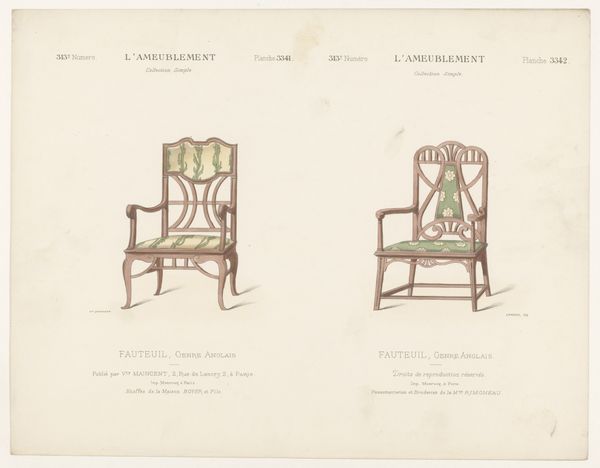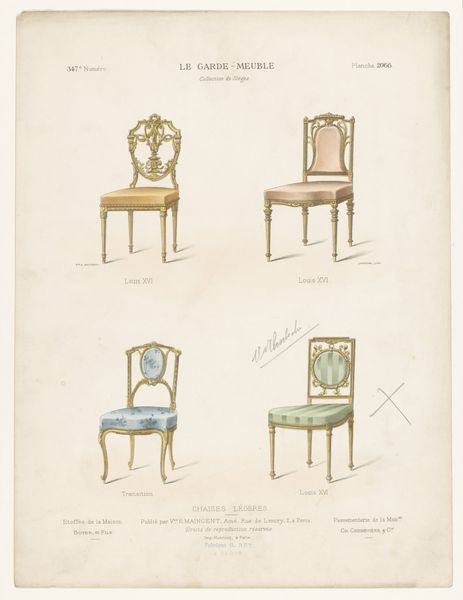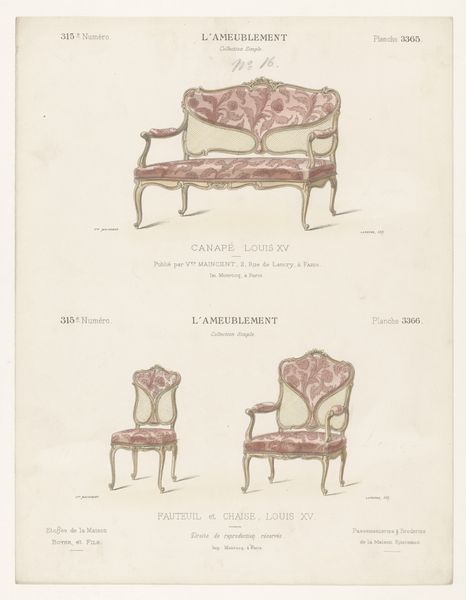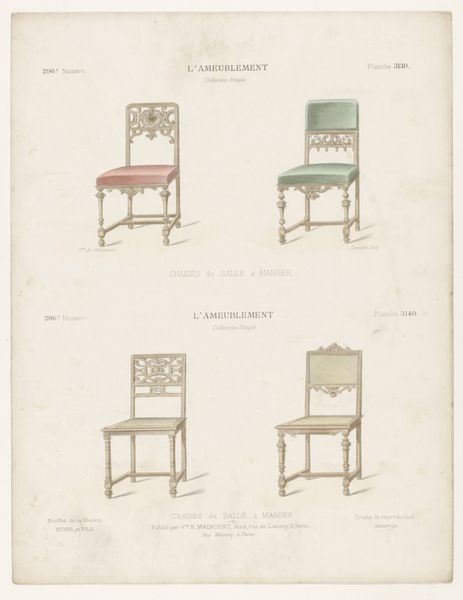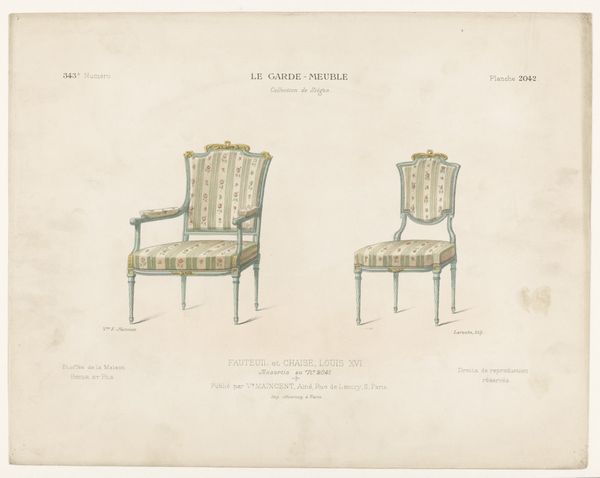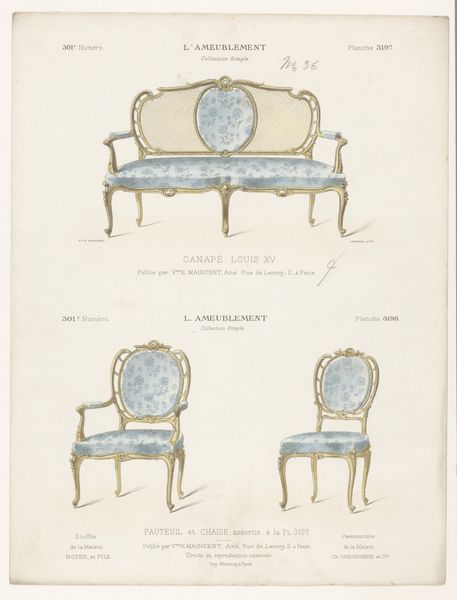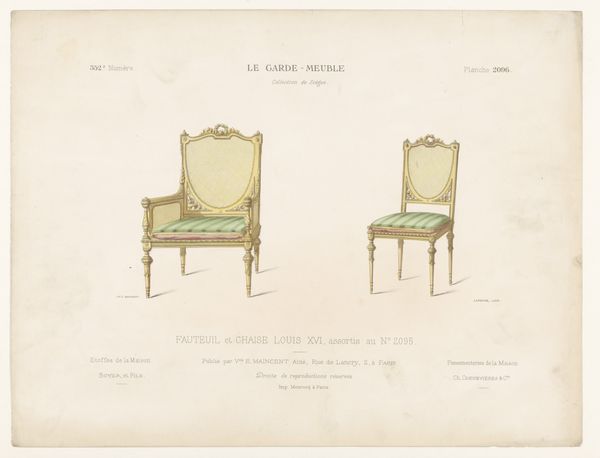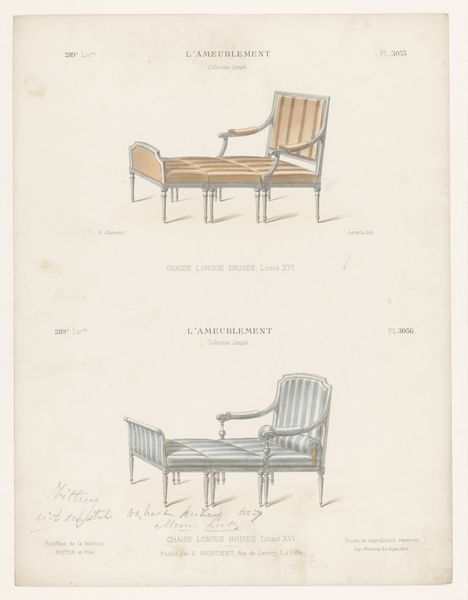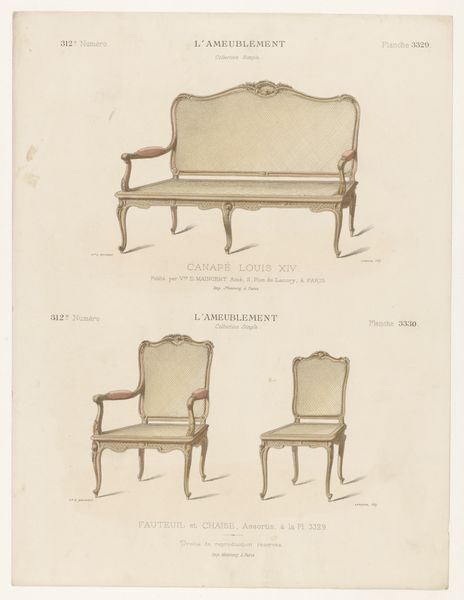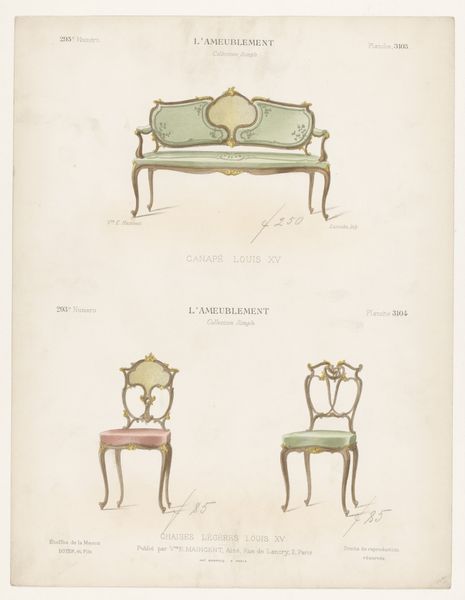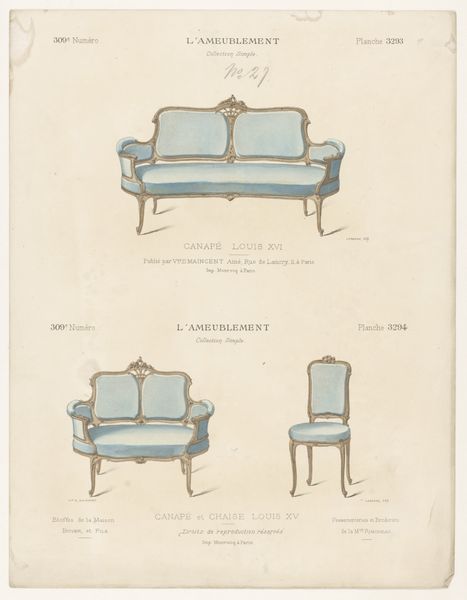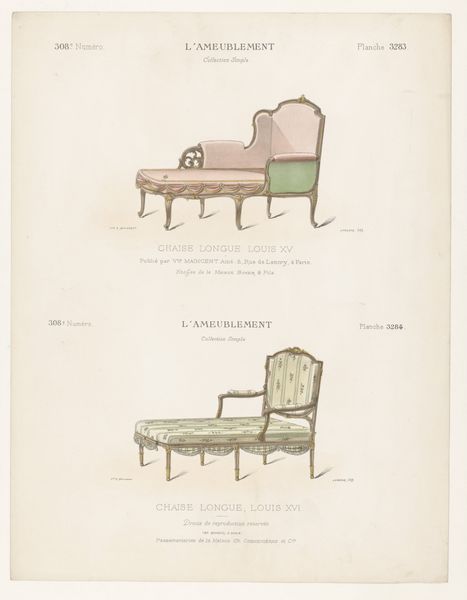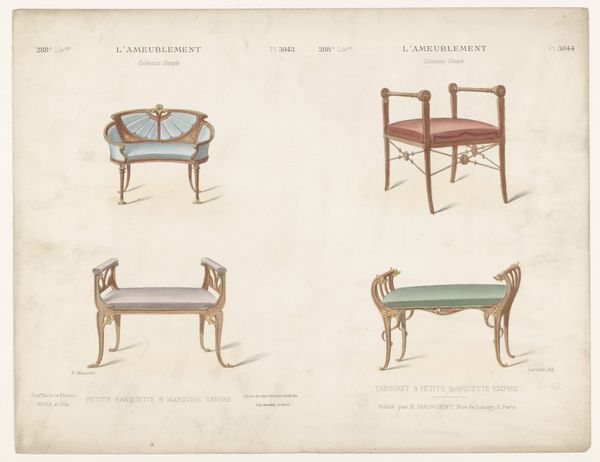
graphic-art, print, watercolor
#
graphic-art
#
art-nouveau
# print
#
watercolor
#
watercolour illustration
#
decorative-art
#
watercolor
Dimensions: height 358 mm, width 275 mm
Copyright: Rijks Museum: Open Domain
Curator: Oh, my dear, look at these chairs! They're so… perfectly imperfect. It feels like a dream, a hazy memory of tea parties and whispered secrets. Editor: This sheet showcases four chair designs by Léon Laroche dating back to 1895, bearing the title "Vier stoelen." They’re studies for furniture, really. What’s fascinating is their self-conscious engagement with Art Nouveau aesthetics, explicitly referencing “English style chairs.” Curator: English style by way of a whimsical fairytale. It is, undeniably, that strange combination of angular and sinuous. Those curlicue backs – and that rather somber palette—somehow, it feels terribly Parisian. The palette definitely exudes melancholic, but those pastels also add an aspirational note. It all seems very, shall we say, aesthetically confused! Editor: It's not confused as much as contradictory, a visualization of its socio-historical moment. The emphasis on stylized natural forms signals anxieties about industrial production. I see both utopian and dystopian elements in these decorative flourishes; the chairs seem caught between tradition and progress. They mirror a broader societal tension. Curator: Yes, I completely get that. Almost like it is questioning the viewer. Can art, can furniture, elevate everyday experience beyond utility? And, dare I say, could those seats, with those little round decorations, ever be comfortable? One almost gets a headache just imagining… Editor: That tension between art and function underscores Art Nouveau's core problem. In practice, this movement becomes confined to bourgeois domesticity and consumption. We can critique the fact that such aspirations always become intertwined with access and class boundaries. Curator: But, there's something about these illustrations that transcends function, that resists… the sheer preciousness of those chairs makes me laugh. In the end, their inherent beauty will keep this design relevant forever! Editor: I find myself returning to this image. It challenges us to think about what we expect from design, what we expect from progress, and what kinds of narratives—about gender, about race, about capital—get literally and figuratively "baked in" to everyday objects.
Comments
No comments
Be the first to comment and join the conversation on the ultimate creative platform.
